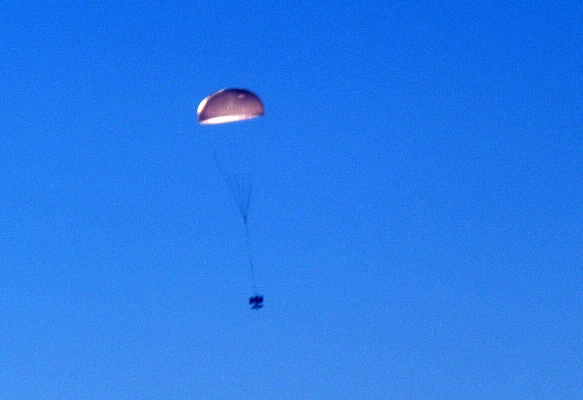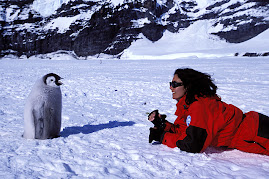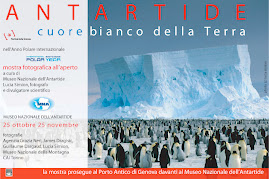 Very few places on Earth are lucky enough to be nicknamed “Gateway to Antarctica”. They can be counted on the fingers of one hand: Hobart in Tasmania; Ushuaia in Argentina; Punta Arenas, overlooking the Straight of Magellan in Chile; Cape Town in South Africa and of course Christchurch, in New Zealand. It is from these locations that intrepid explorers and navigators have set sail to the Great Unknown, in search of the Terra australis incognita and beyond, to the magnetic South Pole and to the geographical South Pole. In those times there were no satellite images to tell you how the path would look like. In Antarctica, no native people could give clues to the explorers, nor help them with their own experience of survival, as with the Eskimos in the Arctic. Among these few “Gateways to the Antarctic”, Christchurch and Hobart are my favorites. I have been in Hobart many times, but I never lived there. I did however spend three months in Christchurch in 2004 and 2005, when I
Very few places on Earth are lucky enough to be nicknamed “Gateway to Antarctica”. They can be counted on the fingers of one hand: Hobart in Tasmania; Ushuaia in Argentina; Punta Arenas, overlooking the Straight of Magellan in Chile; Cape Town in South Africa and of course Christchurch, in New Zealand. It is from these locations that intrepid explorers and navigators have set sail to the Great Unknown, in search of the Terra australis incognita and beyond, to the magnetic South Pole and to the geographical South Pole. In those times there were no satellite images to tell you how the path would look like. In Antarctica, no native people could give clues to the explorers, nor help them with their own experience of survival, as with the Eskimos in the Arctic. Among these few “Gateways to the Antarctic”, Christchurch and Hobart are my favorites. I have been in Hobart many times, but I never lived there. I did however spend three months in Christchurch in 2004 and 2005, when I  attended the Graduate Certificate in Antarctic Studies (GCAS) organized by Gateway Antarctica, the University of Canterbury and Antarctica New Zealand. So Christchurch is almost home for me. And I am always happy to be back here. I like to visit the historic places where Scott, Shackleton and Sir Edmund Hillary have been – prior to their long journey South to the Big Freeze. I like to have a drink at the Warners Hotel – where Scott used to stay and where a suite is named after him – or pass by Scott’s statue, especially after sunset, when night is coming and the sky is deep blue, glowing with light. Wearing his pale Burberry’s polar clothes, Scott’s statue looks like a ghost: where are his teammates, Lawrence Oates, Henry Birdie Bowers, Dr. Wilson, Edgar Evans? Everything is silent. Memories makes no noise. I think of the statue of Italo-Australian meteorologist Louis Bernacchi, standing on the waterfront in Hobart. Bernacchi (who participated in the first overwintering on the continent with Borchgrevink, at Cape Adare in 1899-1900), is flanked by his
attended the Graduate Certificate in Antarctic Studies (GCAS) organized by Gateway Antarctica, the University of Canterbury and Antarctica New Zealand. So Christchurch is almost home for me. And I am always happy to be back here. I like to visit the historic places where Scott, Shackleton and Sir Edmund Hillary have been – prior to their long journey South to the Big Freeze. I like to have a drink at the Warners Hotel – where Scott used to stay and where a suite is named after him – or pass by Scott’s statue, especially after sunset, when night is coming and the sky is deep blue, glowing with light. Wearing his pale Burberry’s polar clothes, Scott’s statue looks like a ghost: where are his teammates, Lawrence Oates, Henry Birdie Bowers, Dr. Wilson, Edgar Evans? Everything is silent. Memories makes no noise. I think of the statue of Italo-Australian meteorologist Louis Bernacchi, standing on the waterfront in Hobart. Bernacchi (who participated in the first overwintering on the continent with Borchgrevink, at Cape Adare in 1899-1900), is flanked by his dog Joe. He doesn’t look like a ghost, he’s a scientist, an explorer. A few yards away from Scott’s statue (made by his wife Kathleen and offered to the City of Christchurch), stands the elegant building of the Canterbury Museum; it holds quite interesting antarctic memorabilia from several expeditions, including those from the heroic age. Polar clothes, tents, skis, a motorized sledge taken to the Antarctic by Shackleton; a bunch of sennegrass from the Terra Nova Expedition. What is “sennegrass”? Read Scott’s diaries and you will know: it’s a special grass, with very long leaves. Explorers used to stuff it into their boots to absorb sweat. Every evening they took it out from the boots; the sweat instantly freezes up, so they just had to shake it, and the sennegrass was ready to be used again the following day. I guess that it was traditionally used by the Eskimo
dog Joe. He doesn’t look like a ghost, he’s a scientist, an explorer. A few yards away from Scott’s statue (made by his wife Kathleen and offered to the City of Christchurch), stands the elegant building of the Canterbury Museum; it holds quite interesting antarctic memorabilia from several expeditions, including those from the heroic age. Polar clothes, tents, skis, a motorized sledge taken to the Antarctic by Shackleton; a bunch of sennegrass from the Terra Nova Expedition. What is “sennegrass”? Read Scott’s diaries and you will know: it’s a special grass, with very long leaves. Explorers used to stuff it into their boots to absorb sweat. Every evening they took it out from the boots; the sweat instantly freezes up, so they just had to shake it, and the sennegrass was ready to be used again the following day. I guess that it was traditionally used by the Eskimo  people. In the Canterbury Museum you will also see canned pemmican — dried meat mixed with fat. There was pemmican for men and “dog pemmican”. Pemmican is almost an antarctic explorer legend, like the Scott tents and the Primus stove (exhibited here).The Canterbury Museum also has a Ferguson tractor (tiny vehicle with which Sir Ed Hillary was able to cross some 2,000 kilometers of Antarctic icefields, glaciers, crevasses and ice shelves, prior to reaching the geographical South Pole, where he waited for Vivian Fuch to arrive on his orange British Transantarctic expedition snowcats (one is on display). Other Antarctic memorabilia include a copy of the Aurora Australis (the book printed in the Antarctic by Shackleton and
people. In the Canterbury Museum you will also see canned pemmican — dried meat mixed with fat. There was pemmican for men and “dog pemmican”. Pemmican is almost an antarctic explorer legend, like the Scott tents and the Primus stove (exhibited here).The Canterbury Museum also has a Ferguson tractor (tiny vehicle with which Sir Ed Hillary was able to cross some 2,000 kilometers of Antarctic icefields, glaciers, crevasses and ice shelves, prior to reaching the geographical South Pole, where he waited for Vivian Fuch to arrive on his orange British Transantarctic expedition snowcats (one is on display). Other Antarctic memorabilia include a copy of the Aurora Australis (the book printed in the Antarctic by Shackleton and  Frank Wild), hand-written notes by Scott, a medical box, skis, sledges, and polar clothes worn by Richard Byrd. Busts of the explorers peer out here and there, with Byrd and Fuchs being the most fierce-looking ones.In another large area of the
Frank Wild), hand-written notes by Scott, a medical box, skis, sledges, and polar clothes worn by Richard Byrd. Busts of the explorers peer out here and there, with Byrd and Fuchs being the most fierce-looking ones.In another large area of the  Canterbury Museum there is a partially reconstructed science station: Hallett station, a permanent American-New Zealand base which was built at Cape Hallett, Northern
Canterbury Museum there is a partially reconstructed science station: Hallett station, a permanent American-New Zealand base which was built at Cape Hallett, Northern  Victoria Land, for the International Geophysical Year in 1957-58. Cape Hallett is home to the second largest Adélie penguin rookery in Antarctica (50,000 couples); to build the station, 8,000 penguins had to be removed from their breeding grounds and fences were installed to prevent them from going back “home”. DC3 and Hercules LC-130 used to land at Hallett station during the summer months (which is during the breeding season).Nowadays explorers (scientists and technicians) don’t set sail from nearby Lyttelton, a wonderful natural harbor a few kilometers away from downtown Christchurch, but board US Hercules LC-130s, RNZAF Hercules C-130s and US C-17s from Christchurch airport, side by side with Boeing 747s
Victoria Land, for the International Geophysical Year in 1957-58. Cape Hallett is home to the second largest Adélie penguin rookery in Antarctica (50,000 couples); to build the station, 8,000 penguins had to be removed from their breeding grounds and fences were installed to prevent them from going back “home”. DC3 and Hercules LC-130 used to land at Hallett station during the summer months (which is during the breeding season).Nowadays explorers (scientists and technicians) don’t set sail from nearby Lyttelton, a wonderful natural harbor a few kilometers away from downtown Christchurch, but board US Hercules LC-130s, RNZAF Hercules C-130s and US C-17s from Christchurch airport, side by side with Boeing 747s or Airbus 320s. Still, Christchurch glows with the charm of the heroic age of exploration, and when I sit comfortably onboad a giant C-17, heading south to the Ice, my thoughts go to the intrepid explorers who opened the way to the new age of exploration — science, technology and logistics on the last frontier of our planet.
or Airbus 320s. Still, Christchurch glows with the charm of the heroic age of exploration, and when I sit comfortably onboad a giant C-17, heading south to the Ice, my thoughts go to the intrepid explorers who opened the way to the new age of exploration — science, technology and logistics on the last frontier of our planet. By Lucia Simion, who also blogs in Italian.
Photos : Lucia Simion



















